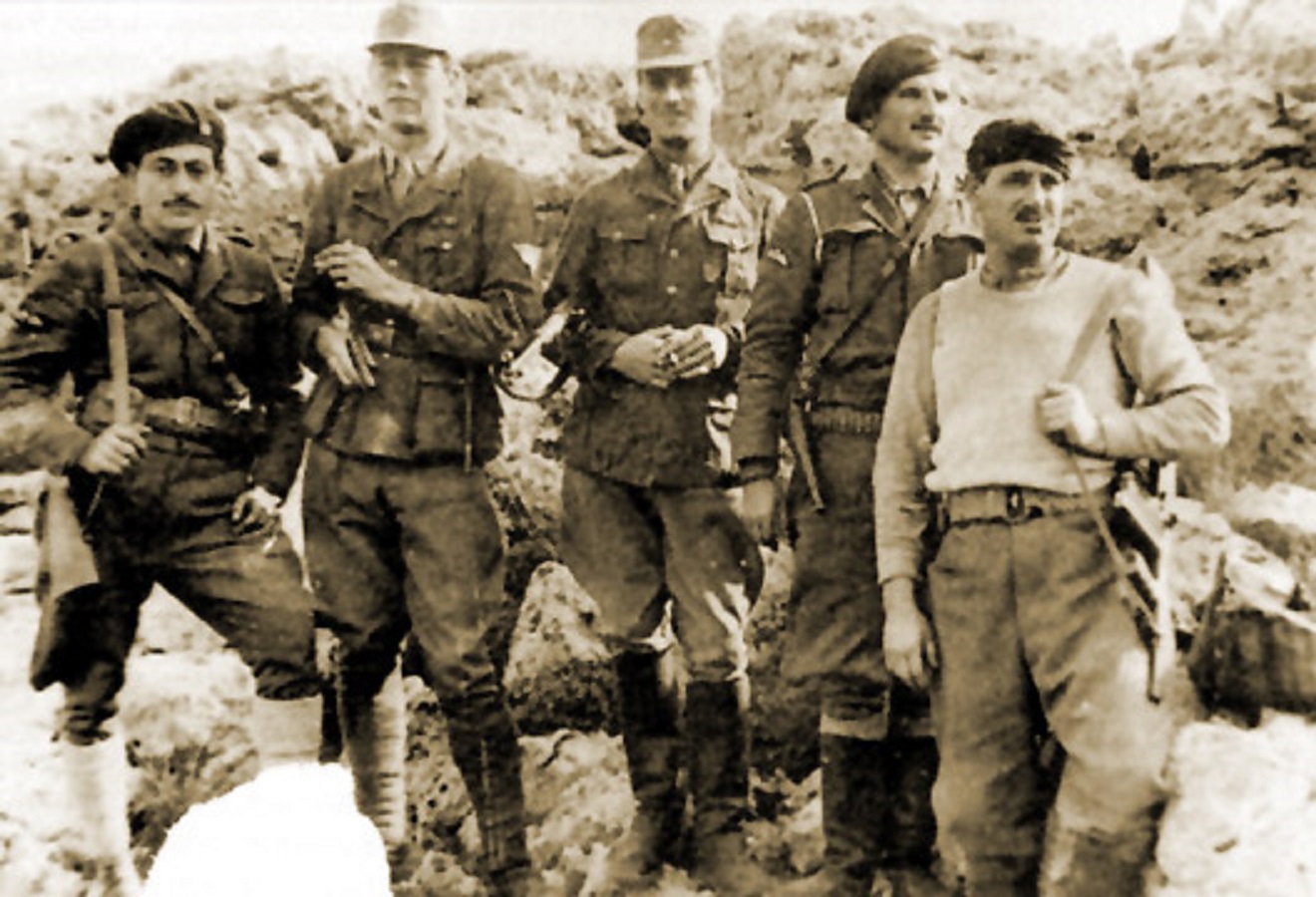Members of the Kreipe abduction team (from l. to r.): Georgios Tyrakis, William Stanley Moss, Patrick Leigh Fermor, Emmanouil Paterakis, and Antonios Papaleonidas. The two British SOE officers are in German uniform. Credit: Gabriella Bullock / CC BY 3.0 DEED.
The kidnapping of Heinrich Kreipe was an operation executed jointly by the British Special Operations Executive (SOE) and local resistance members in Crete in German-occupied Greece during the World War II. The operation was led by SOE Major Patrick Leigh Fermor.
The SOE was a secret British World War II organization formed in 1940. It conducted espionage, sabotage, and reconnaissance in occupied territories, and aided local resistance movements. Known as the “Baker Street Irregulars” or “The Ministry of Ungentlemanly Warfare,” it operated in all Axis-occupied territories, barring agreed demarcation lines with the U.S. and the Soviet Union. The SOE employed over 13,000 people, including around 3,200 women. The SOE was dissolved in 1946. Many of the functions of the SOE were taken over by the Secret Intelligence Service (SIS), also known as MI6.
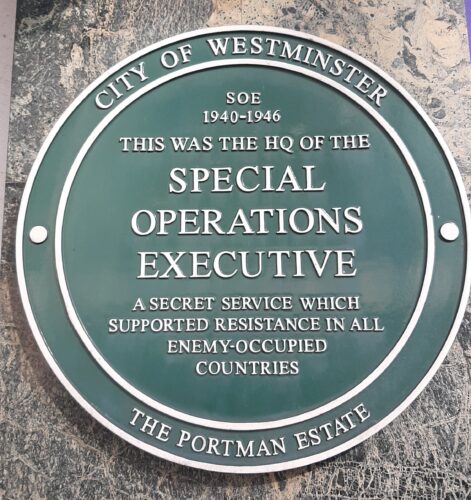
Patrick Leigh Fermor, also known as Paddy Fermor, was a British author, scholar, and soldier who played a significant role in the Cretan resistance during World War II Born on February 11, 1915, Fermor was known for his unique prose style and his geographical and scholarly explorations. Instead of going to university, he set out at the age of “18 and three-quarters” in December 1933 to walk from the Hook of Holland to Constantinople (now Istanbul). His journey took him southeast through the snow into Germany, then up the Rhine and eastwards down the Danube. This European trek was undertaken with a book in mind, but it took him 40 years to publish the first volume of his projected trilogy on the adventure.
Fermor joined the SOE in 1941. Apart from the kidnapping of German General Heinrich Kreipe, Fermor was involved in organizing the island’s resistance to the German occupation. He returned to Crete three times during the German occupation, once by parachute. Sir Patrick Michael Leigh Fermor DSO OBE passed away on June 10, 2011.
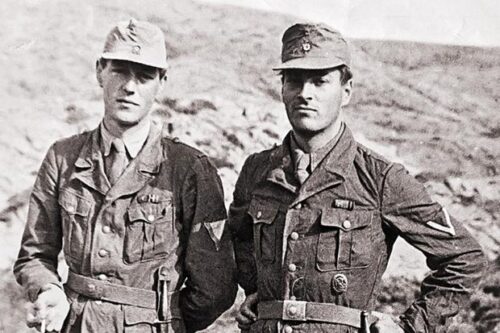
The Abduction
The operation was launched on February 4, 1944, when Fermor landed in Crete with the intention of abducting notorious war criminal and commander of 22nd Air Landing Division, Generalleutnant Friedrich-Wilhelm Müller, nicknamed “The Butcher of Crete”. However, by the time of the arrival of the rest of the abduction team, led by Captain William Stanley Moss, also known as Billy Moss, Müller had been succeeded by Generalmajor Heinrich Kreipe, who was chosen as the new target.
Karl Heinrich Georg Ferdinand Kreipe , born on June 5, 1895, was a career soldier who served in both World War I and World War II. He had seen action at the Battle of Verdun where he was awarded the Iron Cross First Class. By 1939, Kreipe had attained the rank of colonel in the Wehrmacht.
During World War II, Kreipe participated in the Battle of France, the drive towards Leningrad, and the fighting in Kuban during Operation Barbarossa. He was awarded the Knight’s Cross of the Iron Cross on October 13, 1941. In March 1944, Kreipe was appointed Commander of the 22nd Air Landing Infantry Division, operating on Crete.
On the night of April 26, 1944, Kreipe’s car was ambushed while en route from his residence to his divisional headquarters. Kreipe was tied and forced into the back seat while Leigh Fermor and Moss impersonated him and his driver respectively. Kreipe’s notorious impatience at roadblocks enabled the car to pass numerous checkpoints before being abandoned at the hamlet of Heliana. The abductors continued on foot, evading thousands of Axis soldiers sent to stop them, with the help of guides from the local resistance. On May 14, the team was picked up by a British motorboat from the Rodakino beach and transported to British-held Egypt.
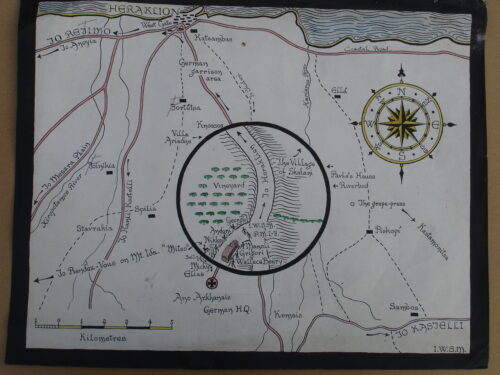
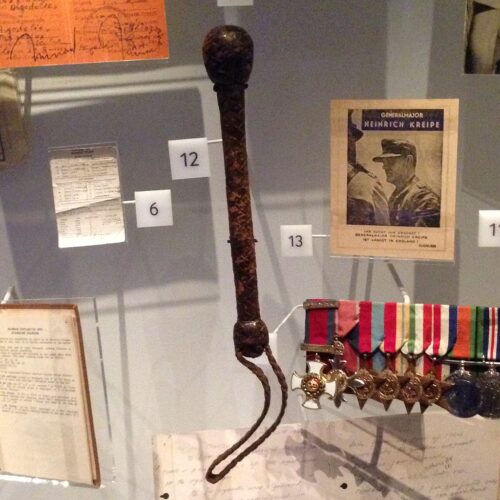
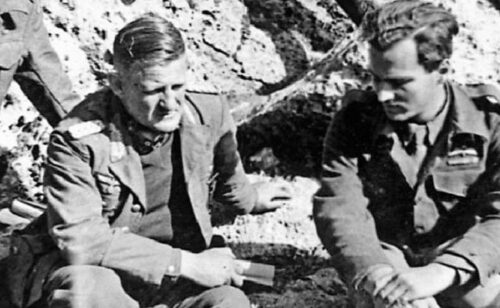
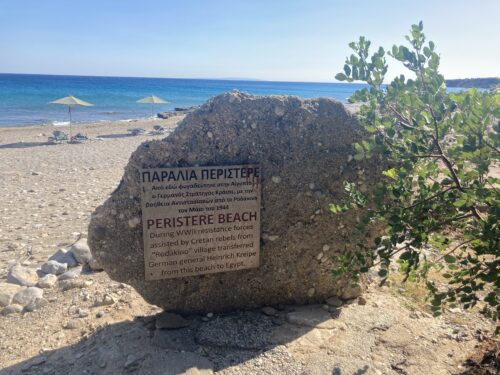
The Aftermath
Major Fermor was awarded Distinguished Service Order (DSO) and Captain Moss was awarded the Military Cross (MC) for their actions during the abduction operation.
The success of the operation was put into question several months afterwards. The outcome came to be seen as a symbolic propaganda victory rather than a strategic one. The relatively harmless Kreipe was replaced by Müller, who ordered mass reprisals against the civilian population of the island, known as the Holocaust of Kedros. Also known as the Holocaust of Amari, it was a mass murder carried out by Nazi German soldiers that targeted the civilian residents of nine villages located in the Amari Valley on the Greek island of Crete.
On August 22, 1944, Wehrmacht infantry carried out the reprisal operation, which resulted in the deaths of 164 civilians. The operation was ordered by Müller, commander of the garrison of Crete, to intimidate the population and deter local guerrillas from attacking the occupation forces during their imminent retreat to Chania. This was followed by the razing of most villages, looting, pillage of livestock, and destruction of harvests. The Amari Valley, known for its beauty and fertile lands, had been a significant center of the Cretan resistance during the occupation. Müller was executed by firing squad for his war crimes on May 20,1947 in Chaidari near Athens, Greece.
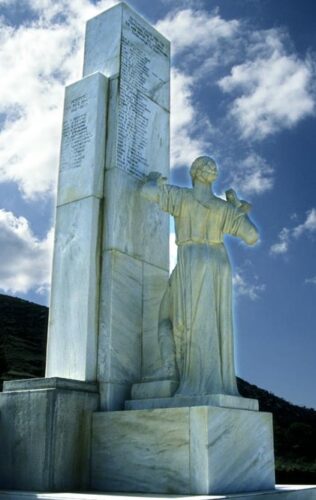
In Conclusion
The kidnapping of Heinrich Kreipe was a daring operation that showcased the bravery and ingenuity of the SOE and the local resistance in Crete. Despite the subsequent reprisals, the operation remains a significant event in the history of World War II. The abduction operation entered popular imagination through the biographical works of several of its participants, most notably Moss’s book Ill Met by Moonlight.
*The views and opinions expressed on this website are solely those of the original authors and contributors. These views and opinions do not necessarily represent those of Spotter Up Magazine, the administrative staff, and/or any/all contributors to this site.
